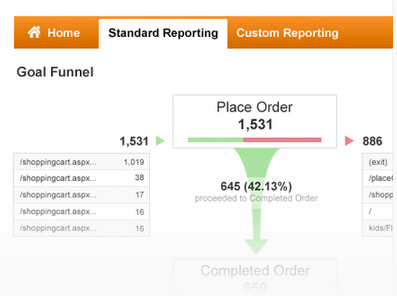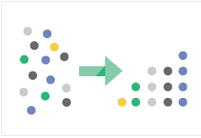Google Universal Analytics vs. Classic
The Internet marketplace is in a state of constant progress. Web tracking tools utilized five or seven years ago will not be as effective today. As technology evolves, consumers are able to interact with brands and products in innovative new ways, necessitating more sophisticated tools to monitor web behavior.
That’s one of the reasons Google has overhauled their analytics platform, introducing Universal Analytics. In this article, you’ll learn the 5 key features of Universal Analytics and how it differs from its predecessor.
What’s the difference between Universal Analytics and Google Analytics?
Universal Analytics has moved away from strictly tracking visits to websites and basic site engagement to a more detailed tracking system. You can now track how your customers interact across an array of devices. It even enables you to track their engagement offline, such as measuring their behavior from a Point-of-Sale system.
It also allows you to import business data and measure rich demographic segmentation by using metrics and custom dimensions. Universal Analytics not only enables you to track your customers’ behavior, but also allows you to you calculate your exact ROI.
Five Major Changes: Universal vs. Classic
1) Offline Conversion Tracking
- Can import data from any web-enabled devices (i.e. mobile apps, etc.)
- Integrates with in-store Point-of-Sale systems to integrate with in-store transactions.
- Link store’s transactions with campaigns by utilizing a loyalty card that’s tagged to a User ID with the full history of your customers’ interactions with your brand.
2) Multiple Custom Dimensions in Reports
- Allows for more in-depth behavior and engagement tracking.
- Obtain comprehensive reports to compare various activities between the set of users.
- Shows you how various blog authors engage on different levels.
3) Multi-Session Segmentation
- Can now segment based on multiple visits. For example, you can create an advanced segment around clients based in New York City who visited your site on Monday between 9 AM and 1 PM and spent $50.00.
4) Custom Search Engine Additions
- Ability to add websites as a search engine, which filters them into your organic traffic.
- More streamlined filtering of keywords from your reports that allows you to focus more on customers that aren’t familiar with your brand.
5) Customer Tracking Integration
- Can integrate with your back-end customer tracking database and assign IDs to certain types of customers.
- Can tie in a multitude of demographics to drill down into data further.
How do I switch to Universal Analytics?
To change over to Universal, add the Universal code, along with your existing Analytics code, under a new analytics web property. This will prevent you from losing your current data. Plus, you can start tracking in Universal, and when Google provides a way to import old data into Universal Analytics, you can take the necessary steps.
Another option would be to hire a web developer who knows the ins and outs of working with tracking codes. An expert can save you a significant amount of time by helping you set up analytics, ensuring that you lose no valuable data in the process.







